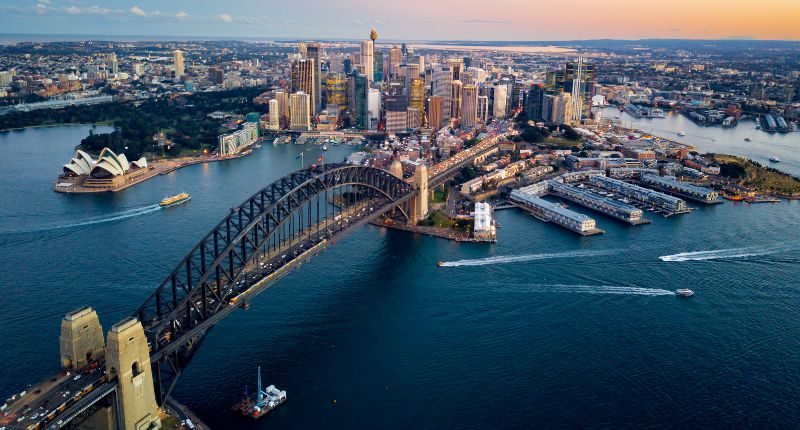- Sydney's premium office market is experiencing growing demand
- Demand for offices in the CBD's Midtown, Southern and Western precincts is declining
- Flight to quality in full force, with investors favouring premium office assets in core locations
Sydney’s premium office market is starting to see growing demand amidst a “flight to quality” within the sector according to a new report.
Savills‘ Spotlight: Flight to Quality Report, found that Sydney’s premium office market has seen a three-year cumulative increase in net absorption totalling around 12.3% of premium office stock.
However, the report also found that office assets within Sydney CBD’s Midtown, Southern and Western precincts are experiencing declining net take-up, with office stock in each of these precincts displaying negative net absorption in the three years to 2022.
According to Savills, continued robust demand for premium office space reflects the ongoing ‘flight to quality’ trend, with the tightly-held market displaying no signs of weakening despite slowing economic growth, high inflation, rising interest rates and a shift in working patterns.
Driven by structural changes to working environments and relatively low exposure to leasing risk, this steady demand for premium office space in Sydney and other major office markets in Australia is set to continue.
Rising core take-up
The report found a decline in net absorption in certain precincts of Sydney’s CBD, including Midtown, Southern and Western, despite traditionally strong take-up in these areas. Core take-up, however, has increased. This is a reversal of a three-decade trend of strong take-up in the less expensive precincts due to underutilised space. The Western and Southern precincts saw a decrease of 40,700 square metres and 25,000 square metres respectively in 2021-2022.
Net absorption in the Sydney CBD core however increased by 101,100 square metres in 2021-2022.
National Director, Capital Markets – Research at Savills Australia, Chris Naughtin said:
”With demand for premium office space in core locations growing strongly, premium office assets in core locations remain in favour with investors due to their relatively high rental growth prospects.”

He said that a relatively strong occupier market outlook for centrally-located prime assets will drive an investor rotation into core assets and out of non-core assets, potentially supporting a rebound in deal activity in H2 2023 as the interest rate outlook becomes clearer.
According to Savills, assets in central locations with strong transport links will continue to outperform, alongside newer, higher quality office space that help support business continuity, meet environmental and sustainability mandates, cater to the changes in work patterns, and allow employers to compete for talent.
State Director – Office Leasing NSW at Savills, Tom Mott said, “Across the Sydney CBD, there are no fewer than 27 whole floor spec fit-outs underway, representing 33,516 sqm of total NLA, which is unprecedented.”
“This means that of all Prime Grade whole floors available in the following six months, 11.7% have spec fit-outs in them, equating to 9.5% of the total whole floor Prime grade NLA vacancy between now and September.”

According to Savills, prime assets are beginning to materially outperform the secondary market in terms of capital value growth and total investment returns, following the broad-based rebound in capital growth following the pandemic downturn. This divergence in performance is already occurring and is likely to continue.
Stronger demand for Core assets is underpinned by major institutional investors repositioning their portfolios to reduce leasing risk. While demand trends over the 2020-22 period have been heavily impacted by COVID-19, the rebound in demand for office space has been heavily skewed towards the Core where net absorption has increased by 101,100 sqm over these two years.
Multi-speed market continues
The report said a concentrated demand for premium office space across most of Australia’s capitals, whilst demand for secondary stock decreases.
Savills forecasts that this is likely to continue, supported by a slower economic growth outlook increasing investment in assets with lower leasing risk. Stronger emphasis on amenity, location, and green credentials are also expected to drive premium take-up.
From 2013-22, national net absorption in the premium segment averaged circa 132,400 sqm – 4.9% of premium office stock – per year, compared with 2.5% of stock per year over the decade prior. Over the 2013-22 period, net absorption in the A grade segment has remained positive yet steadily slowed, while net absorption in the secondary market has declined by 1.4% on average per year.
This shows a significant divergence between prime and secondary take-up.
“While there is a lot of talk about ‘flight to quality’ as a post-COVID office trend, it is important to recognise this divergence is nothing new,” Mr Naughtin said.
“We’ve seen the secondary-grade office market slow consistently over the past decade and the pandemic has simply continued and to a degree, accelerated this trend.”
Savills’ research revealed that robust demand for premium office space has continued over the last decade, driven by a spate of new office developments that have resulted in higher availability.
Structural trends and changes to working patterns in the wake of the pandemic have also led to employers recalibrating their working environments, seeking to attract and retain talent amidst a tight labour market.
“The shift in working patterns towards a hybrid model has put pressure on employers to deliver premium workplaces that ‘earn the commute’ and boast strong environmental credentials,” Mr Naughtin said.
Investment in premium to rise
Savills said they predict investor demand for Australian premium commercial office space will remain strong despite slowing growth, high inflation, and rising interest rates. While the Australian economy is expected to avoid recession in 2023, economic growth is likely to slow materially, and Savills warns that a softening in labour market conditions – both domestically and globally – may increase leasing risk in some markets.
Premium markets remain relatively tightly held and less exposed to leasing risk. Nationally, the premium vacancy rate is just 8.7% compared to 13.3% for A grade and 14.7% for secondary office space.








